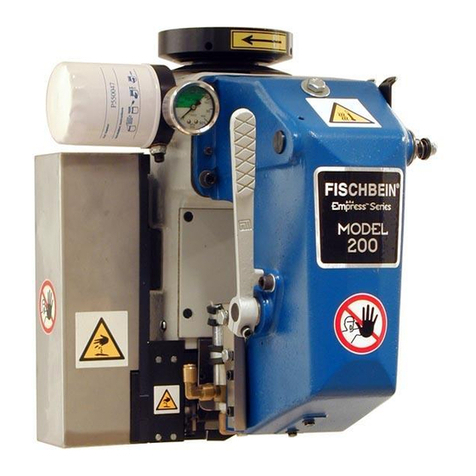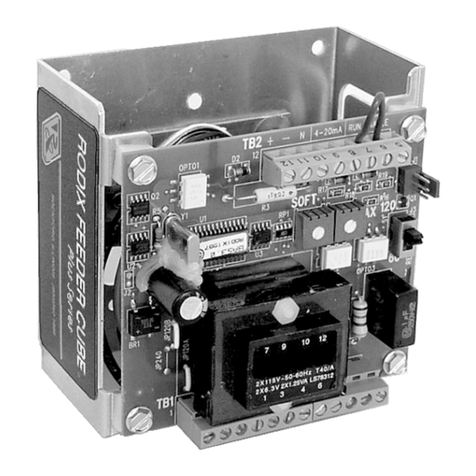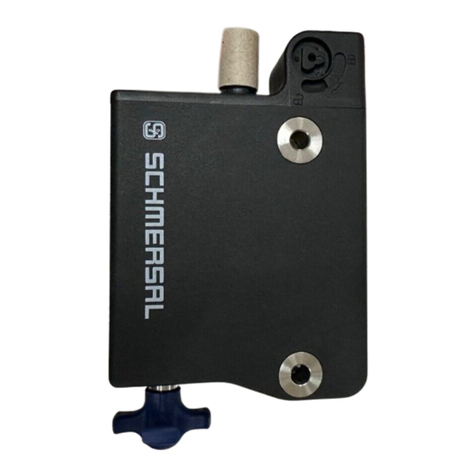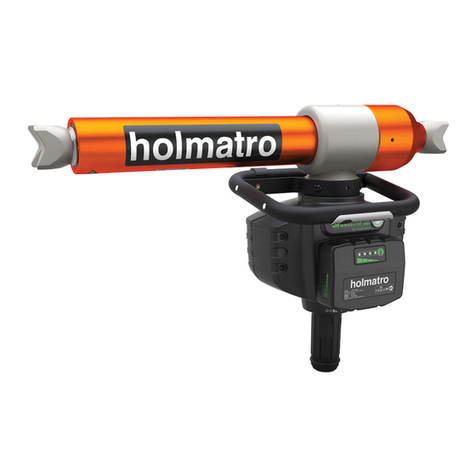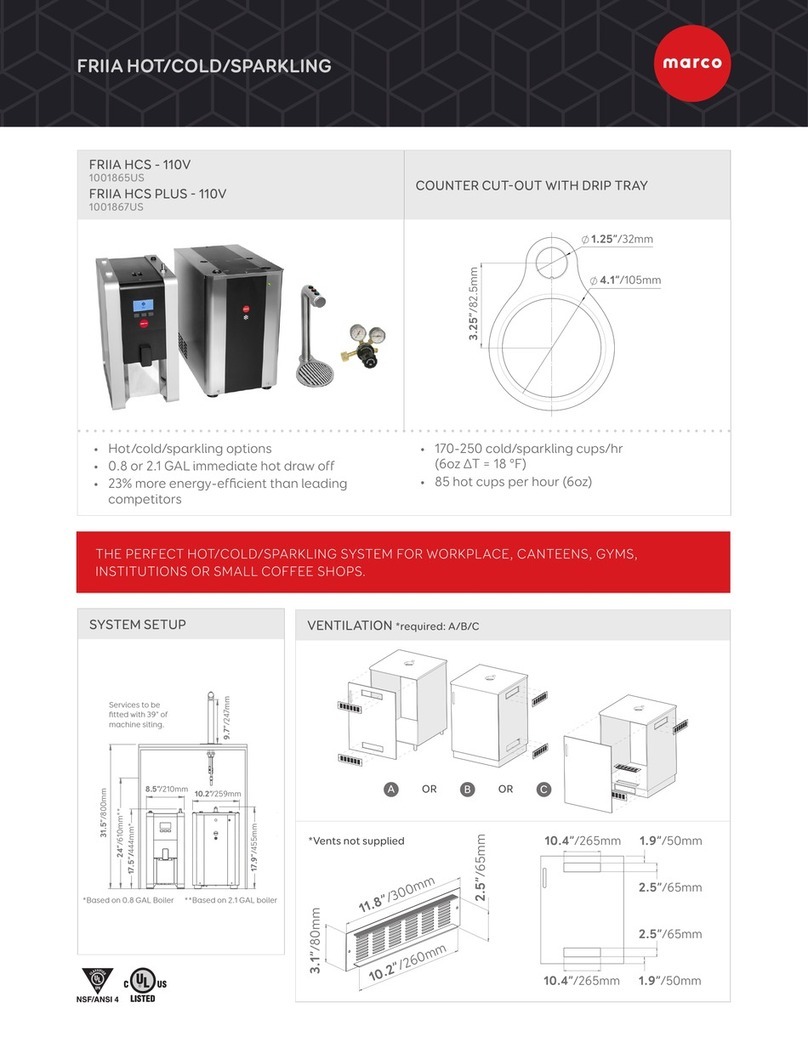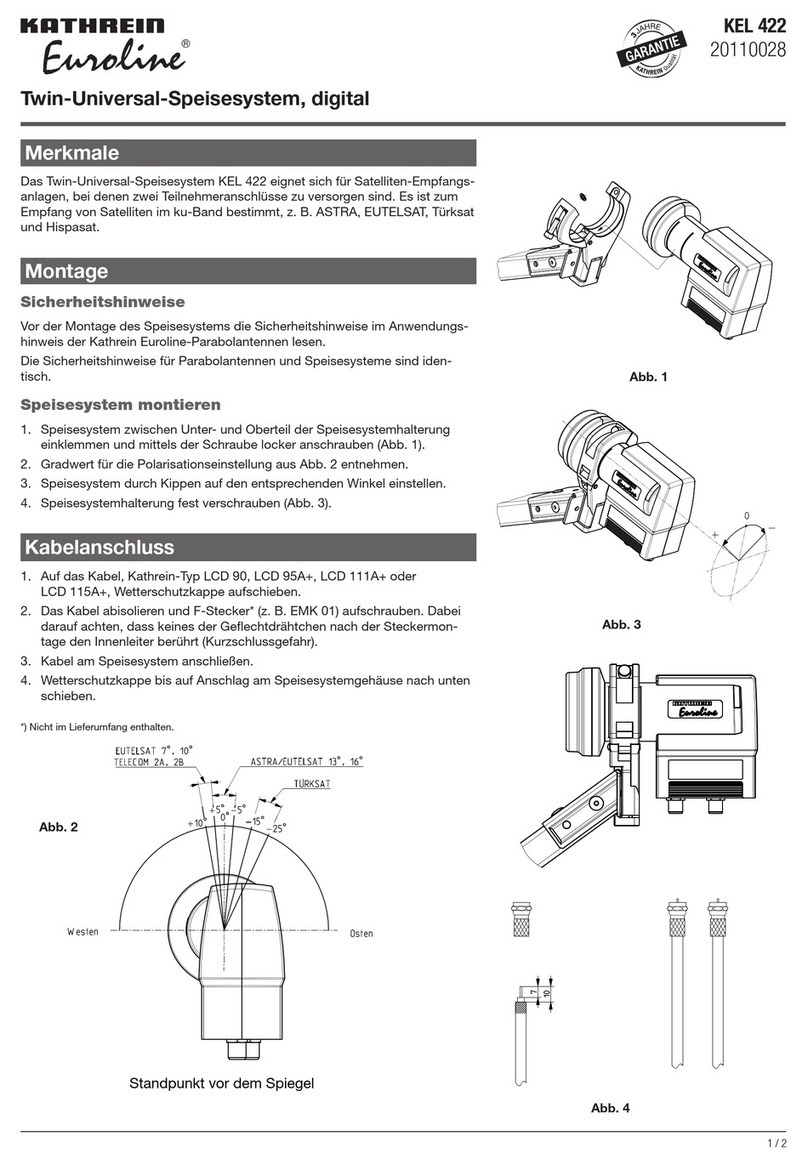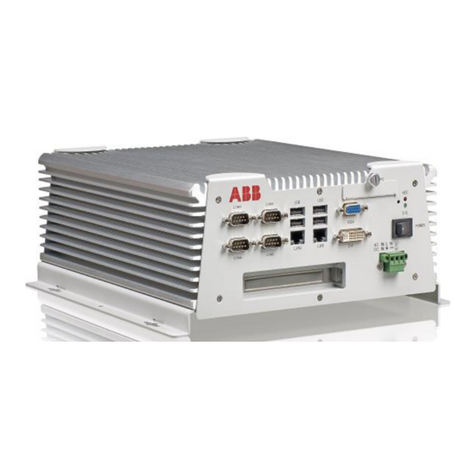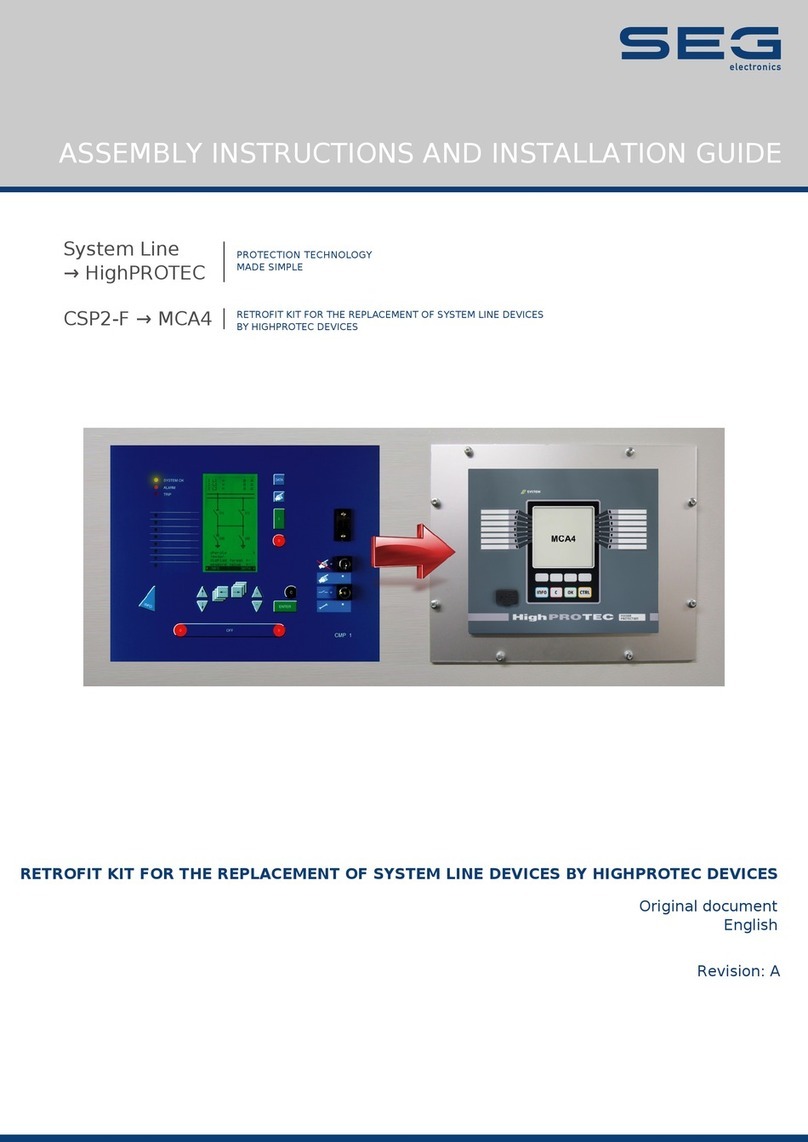FISCHBEIN PBC-6000 User manual

FISCHBEIN®Co. MODEL PBC-6000™
OPERATOR’S MANUAL
REV. D 2005-03 1
TABLE OF CONTENTS
Page
1. INTRODUCTION………………………………………………………………………………….. 3
1.1 General Safety Precautions……………………………………………………………. 4
1.2 Safety Statement……………………………………………………………………………4
1.3 Revision Changes……………………………………………………………………………4
2. WARRANTY STATEMENT………………………………………………………………………4
3. WARNINGS…………………………………………………………………………………………. 4
4. COMMON APPLICATIONS OF THE PBC 6000……………………………………… 5
4.1 System Illustration………………………………………………………………………… 6
4.2 System Characteristics…………………………………………………………………… 7
4.3 Accessories and Options………………………………………………………………… 9
5. INSTALLATION……………………………………………………………………………………. 10
5.1 Recommended Work Area Layout…………………………………………………… 10
5.2 Site and System Preparation………………………………………………………….. 10
5.3 Unpacking Procedure…………………………………………………………………….. 11
6. ON LINE PREPARATION……………………………………………………………………… 13
6.1 Safety Guidelines……………………………………………………………………………13
6.2 Electrical System…………………………………………………………………………… 13
6.3 Pneumatic System…………………………………………………………………………. 14
6.4 Leveling and Centering……………………………………………………………………14
6.5 Speed Checks and Synchronization…………………………………………………. 16
6.6 Folder …………………………………………………………………………………………..17
6.7 Compression Belts and Rollers………………………………………………………… 17
6.8 Setting the Temperature………………………………………………………………… 18
6.8.1 Determining the Correct Temperature………………………………….18
6.8.2 Using the Temperature Controller………………………………………..19
7. OPERATING THE PBC 6000………………………………………………………………… 20
7.1 Process Description………………………………………………………………………. 20
7.2 Operating the PBC 6000
(START UP PROCEDURE)
………………………. 22
7.3 Shutdown Procedure……………………………………………………………………… 23

FISCHBEIN®Co. MODEL PBC-6000™
OPERATOR’S MANUAL
REV. D 2005-03
2
8. MAINTENANCE AND ADJUSTMENTS…………………………………………………… 24
8.1 Scheduled Maintenance………………………………………………………………… 24
8.1.1 DailyMaintenance……………………………………………………………… 24
8.1.2 Monthly Maintenance………………………………………………………… 24
8.2 System Frame………………………………………………………………………………. 26
8.3 Pneumatics…………………………………………………………………………………… 26
8.4 Sensors………………………………………………………………………………………… 27
8.4.1 Thermocouple…………………………………………………………………… 27
8.4.2 Proximity Sensors……………………………………………………………… 27
8.4.3 Airflow Sensor……………………………………………………………………27
8.5 Belts, Rollers and Wheels………………………………………………………………. 28
8.5.1 Carry Through Belts……………………………………………………………28
8.5.2 Compression Belts……………………………………………………………. 30
8.5.3 Compression Rollers………………………………………………………….. 37
8.5.4 Takeup Rollers…………………………………………………………………..38
8.5.5 Pulleys, Drive, Sprocket and Tension…………………………………… 39
8.5.6 Creaser Wheel……………………………………………………………………42
8.6 Bag Guide (Manual Infeed)……………………………………………………………. 47
8.7 Folder and Guides…………………………………………………………………………. 49
8.8 Hot Air (Heater) Manifold………………………………………………………………..51
8.9 Temperature Controller…………………………………………………………………..54
8.10 Drive Motor and Gears…………………………………………………………………… 55
9. QUALITY CONTROL GUIDE…………………………………………………………………. 56
9.1 General Conditions for a Good Seal………………………………………………… 56
9.2 Typical Bag Closures……………………………………………………………………… 57
10. TROUBLESHOOTING…………………………………………………………………………… 60
11. SPARE PARTS LISTS…………………………………………………………………………… 61
12. SAFELY DISPOSING OF A PBC 6000…………………………………………………… 62
13. GLOSSARY…………………………………………………………………………………………… 62
14. ASSEMBLY DRAWINGS AND PARTS LISTS………………………………………… 63

FISCHBEIN®Co. MODEL PBC-6000™
OPERATOR’S MANUAL
REV. D 2005-03 3
READ
INSTALLERS AND OPERATORS OF THIS EQUIPMENT
SHOULD READ THIS ENTIRE DOCUMENT BEFORE
ATTEMPTING TO HANDLE OR OPERATE THE PINCH BAG
CLOSER (PBC 6000) SYSTEM.
BE SURE TO LOCATE AND READ THE ADDITIONAL
COMPONENT MANUALS STORED IN THE ELECTRICAL
ENCLOSURE.
1. INTRODUCTION
The Fischbein Company is a premier packaging company that specializes in bag closing systems.
The original one-man business, founded and established by Dave Fischbein in Minneapolis,
Minnesota in 1910, has now grown to an international firm recognized as the global leader in bag
closing technology which manufactures a variety of state-of-the-art bag closing and handling
machines for diverse packaging applications. Fischbein’s first portable sewing machine for bag
closing was developed over 50 years ago and is still widely used throughout the world for a variety
of bag closing applications. Through our bag sewing, closing and sealing technologies, Fischbein
offers automated solutions for nearly every powder and bulk material packaging requirement.
The product line has greatly expanded from those early days, and the company continues to lead
the industry in helping customers increase productivity through improved product production with
efficient, up-to-date automated packaging solutions.
This Operator’s Manual is intended to help our customers set up, operate and maintain their new
Fischbein Pinch Bag Closer System (PBC). For information not covered in this manual, you can
contact Fischbein through the worldwide web at www.fischbein.com or by writing or calling our
North American or European offices:
North American Office Main European Office
Fischbein Company Fischbein SA
151 Walker Road Paepsem Business Park
Statesville, NC 28625 Boulevard Paepsem 18B
Phone: (704) 871-1159 1070 Brussels, Belgium
FAX: (704) 872-3303 Phone: 32-2-521-01-94
FAX: 32-2-520-33-90

FISCHBEIN®Co. MODEL PBC-6000™
OPERATOR’S MANUAL
REV. D 2005-03
4
1.1 GENERAL SAFETY PRECAUTIONS
The PBC 6000 system is driven by strong motors, contains moving parts with pinch points and sharp
edges and hot machine surfaces. Therefore, technical training and familiarity with this type of
equipment are required to operate and maintain the system. Installers and operators of PBC 6000
should wear proper eye, foot, and hand protection. Turn off and lock out air and power sources when
cleaning or performing maintenance. Once the air source has been locked out, existing air pressure in
the system will be released.
1.2 SAFETY STATEMENT
F
ISCHBEIN IS NOT RESPONSIBLE FOR DAMAGE OR INJURIES CAUSED BY MISUSE OF THE
EQUIPMENT
,
FOR CARELESS OPERATION OR IF IT IS USED TO SEAL MATERIALS FOR WHICH IT
WAS NEVER DESIGNED
. Installers of this machine should wear eye and foot protection at all times
and gloves when working around the hot machine surfaces. Operators must always wear proper
eye protection when operating this machine and not wear loose clothing or jewelry. Long hair
must be pulled back and tied to avoid getting caught in the belts and rollers.
1.3 REVISION CHANGES
The revision of this manual has been upgraded to D to reflect the improvements to the assemblies
on drawings 17708 and 17701A in the back of this manual.
2. WARRANTY STATEMENT
Nothing contained in this document is intended to extend any promise, warranty or representation,
expressed or implied, regarding the FISCHBEIN products described herein. Any such warranties
or other terms and conditions of products shall be in accordance with the standard terms and
conditions of sale for such products, which are available upon request. FISCHBEIN reserves the
right to make changes and improvements to products without notice and without incurring any
obligation to make such changes or add such improvements to products sold previously.
3. WARNINGS
• Always use genuine Fischbein parts. Our parts are specifically designed for Fischbein equipment
to provide optimum performance and safety. Use of non-Fischbein parts can also void the product
warranty.
• Employees shall receive training by the employer on proper equipment operation and shutdown
of this machine.
• Let the machine do the work. Do not pull the bag or materials through it.
• This PBC 6000 system is not suitable to operate in an area where explosive materials are present
(explosive gas, powders, vapors or liquids).
• Read and follow the manuals for the devices used in the PBC 6000 System. The accompanying
manuals are in the electrical enclosure. These manuals will provide the appropriate instructions
for operating and maintaining individual components.

FISCHBEIN®Co. MODEL PBC-6000™
OPERATOR’S MANUAL
REV. D 2005-03 5
• When used in a dusty environment, NEMA12 (IP54) electrical equipment must be used.
• Frequently clean the machine to prevent accumulation of dust, bag and glue materials. Doing this
prevents the accumulation of material that may cause malfunctions or poor bag seals.
• Frequently, clean the compression rollers by using a dull edge to remove excess glue. Be careful
not to cut or gouge the belt surface.
• The PBC 6000 utilizes two HI-temperature heater cartridges. The surfaces surrounding the hot
air manifold will become hot and can cause burns if touched. Never operate the machine
without the guards. Be careful while operating the machine to avoid being injured.
• Electrical service and troubleshooting of this unit must be performed by trained and qualified
personnel. Any OSHA regulations such as electrical and pneumatic lockouts must be followed.
• Turn off the Pinch Bag Closer at the main switch and remove all power going to the electrical
box before making adjustments to the machine.
• Do not operate this machine with guards removed!
• Replacement of the quick release air coupling (P/N P4945) may violate OSHA safety
regulation #1910 for controlling hazardous energy, which may cause serious personal injury.
See equipment shutdown procedures.
4. COMMON APPLICATIONS OF THE PBC 6000
The PBC 6000 is a heavy-duty, production line system that folds and closes pre-glued, multi-wall
paper bags with a fold of up to 1 7/8 inches (48 mm). Note: the PBC is also available with the
option to fold 2 3/8” folds. The system is designed for easy opening as a primary safety factor in
case of an emergency. This feature also prevents the motor from overload if a bag becomes
jammed.
The patented break-away feature provides immediate access to the machine’s heating assembly, drive
belts, and other moving parts requiring maintenance. The unit is compact and adjustable to allow
various bag sizes, conveyor speeds, and heights.
This equipment services the bagging needs of a broad range of products. Common uses include
flour, pet food, agricultural seed, animal feeds, feed additives, lawn fertilizers, absorptive
materials, industrial and agricultural chemicals, powdered dairy products, and bakery mixes.

FISCHBEIN®Co. MODEL PBC-6000™
OPERATOR’S MANUAL
REV. D 2005-03
6
4.1 SYSTEM ILLUSTRATION
1. Casters (2) standard 11. Pin, Swing Arm-Holding (for shipping only)
2. Frame (pedestal and overarm) 12. Infeed (Automated Style Shown)
3. Swing Arm Assembly 13. Locking Casters (2)
4. Motor, Drive – Gear 14 Electrical Connection
5. Cylinder, Pneumatic – Swing Channel 15. Electrical Enclosure
6. Electrical Control Panel 16. Height Adjustment Lock
7. Chain Tension Assembly 17. Compression Belts
8. Height Adjustment Handle 18. Carry Through Belts
9. Flowmeter 19. Belt Guards
10. Air Flow Regulator

FISCHBEIN®Co. MODEL PBC-6000™
OPERATOR’S MANUAL
REV. D 2005-03 7
4.2 SYSTEM CHARACTERISTICS
PHYSICAL CHARACTERISTICS
Total palletized system weight: 770 lbs. (350 kg)
Total system weight: 710 lbs. (323 kg) (standard machine)
System Dimensions:

FISCHBEIN®Co. MODEL PBC-6000™
OPERATOR’S MANUAL
REV. D 2005-03
8
Air Consumption Minimum Requirement: 420 SCFH (11,9 SCMH)
Air Pressure Requirement: 90 PSI (6,2 bar) (with ½ inch air line)
Swing Channel Design: The PBC 6000 is designed with a front breakaway channel,
which swings outward. This allows quick access into the
machine for safety, to clear bag jams, cleaning and maintenance.
Air Scrubber: Blows debris from the bag top that could otherwise prevent a good seal.
Caster Wheels: Two locking in the back and two standard wheels in the front.
Electrical Requirements: The following electrical information is in
accordance with provision 4.7.1 from NFPA 79 (National Fire
Protection Association) Electrical Standard for Industrial
Machinery, 1997 Edition:
TABLE 1
MODEL VOLTAGE PHASE HERTZ F.L.A. MAX. COMP. LOAD
PBC 6000 230 1 60 22 14
PBC 6000 230 3 60 19 14
PBC 6000 380 3 50 12 8
PBC 6000 460 3 60 10 7
PBC 6000 575 3 60 9 5.5
PERFORMANCE CHARACTERISTICS
System Speed Ranges:
(Range 1): Standard: 30-85 feet per min (9,1 – 25,9 meters per min)
(Range 2): Greater than 85 feet per minute (25,9 meters per minute)
(Range 3): Less than 30 feet per minute (9,1 meters per minute)
NOTE: Speeds above 85 FPM (25,9 MPM) are obtainable upon request, but are
dependent upon bag types; please consult the Fischbein representative to determine
the machine capabilities, given the closing requirements.
Fold Size Maximum: 1 7/8 inches (48mm)
Bag Jam Detector: A proximity switch that shuts the heaters off and swings open the
front channel in the event of a detected bag jam.
Bag Size Range (empty):
Width: Variable
Length: 56 inches (1422mm) maximum
Minimum Free Top: 6 inches (153mm) (standard fold minimum)
Overheat Sensor: Shuts down the heaters if the temperature rises above a set
maximum. Still allows air to flow through the hot air
manifold to cool the heaters and prevent any damage.

FISCHBEIN®Co. MODEL PBC-6000™
OPERATOR’S MANUAL
REV. D 2005-03 9
4.3 ACCESSORIES AND OPTIONS
The PBC 6000 is available by request with some special options:
Larger Folder: Kits are available to convert Left-to-Right and Right-to-Left PBC
machines with 1 ¾” folders to 2 3/8” folders and to convert 2 3/8”
folder to 1 ¾”.
Extended Infeed: An automated 17inch (432mm) infeed is available for specific
applications.
Infeed Options: The PBC is available with an automated infeed or a manual infeed.
The manual infeed is extended and has a bag guide to assist the
operator in properly feeding a bag top into the machine. Some kits are
available to convert between automate and manual infeeds.
Bag Counter: The PBC 6000 is capable of having a digital bag counter mounted on
the face of the electrical control panel.
Coder: An ink coder is available for printing on the front or back side of the
bag.
Air Dryer: For compressed air systems that do not dry their air, an air dryer is
available for the PBC pneumatic system.
Height Extension: The PBC frame is available with an extension for the vertical range of
motion. The extension adds about 12 inches (304,8mm) to the height
range of the machine.
Motorized Height
Adjustment: The standard PBC 6000 comes with a manual system to raise and
lower the machine. A motorized system is available, with a control
switch on the front control panel. The system also has electrical limit
switches to prevent the machine from going too far on the ACME
screws within the frame.
Left to Right: The standard PBC 6000 transports and seals bags through its system in
a right to left direction. The machine can be ordered to seal the bags in
a left to right orientation.
Reverse Fold: The standard PBC 6000 folds the bag top towards the front of the
machine. It can be ordered to seal the bag by folding the top towards
the rear of the machine. This option is also available in the left to right
oriented machines.
NEMA 4: The PBC 6000 is available in a NEMA 4 configuration.
Bearings Kit: Optional drive shaft upgrade bearing kit (#17896). Includes heavy
duty flange bearings and drive shafts.

FISCHBEIN®Co. MODEL PBC-6000™
OPERATOR’S MANUAL
REV. D 2005-03
10
5 INSTALLATION
5.1 RECOMMENDED WORK AREA LAYOUT
5.2 SITE AND SYSTEM PREPARATION
ELECTRICAL POWER HOOKUP
The system is wired at the factory for the voltage specified when ordered. Customers are required
to supply incoming electrical connections. SO 12/4 (12 AWG/4 wire) (4 mm2) is recommended.
CAUTION: Be sure machine is connected to building electrical ground. Follow National
Electrical Code (NEC) and all local electrical codes during installation. Note: Electrical
schematics for each unit’s particular voltage option are shipped inside the electrical connection
box on the back of the unit. For load specifications refer to TABLE 1 on page 8.
PNEUMATICS HOOKUP
Connect the air source with a female quick release air coupling (Foster Series 3, #3003 or
equivalent) to the safety shut-off valve, located on the pneumatic control panel (Illustration 6,
page 14). Air hose connections must have a minimum 1/2 in. (13 mm) ID. The PBC 6000
requires compressed, clean, dry, non-lubricated air. The supply must be capable of sustaining 90
PSI (6,2 bar) of pressure and a volume flow rate of at least 400 SCFH (11,3 SCMH).
Illustration 5.1
(
To
p
View
)

FISCHBEIN®Co. MODEL PBC-6000™
OPERATOR’S MANUAL
REV. D 2005-03 11
Illustration 5.2 (Pneumatics Diagram and Schematic)
5.3 UNPACKING PROCEDURE
Every Fischbein system is packaged to protect the unit during normal shipping, storage and
handling. Before the unit is unpacked, inspect the box and skid for any signs of shipping damage.
If possible, record any suspected shipping damage with a digital or Polaroid®camera. Report
anything missing or any damages in writing to the shipper and your Fischbein representative.
CAUTION:
A packaged, palletized PBC 6000 system with all options weighs
approximately 820 lbs. or 373kg and is dimensionally (74”x 56”x
71”) (1880mm x 1422mm x 1803mm) in size.
1. Cut the two plastic straps and remove the lid. At least 7 feet (2,13 m) overhead clearance
will be needed to remove the box itself.
2. Using a pry bar and claw hammer, pry out the nails that fasten the box to the pallet. With the
aid of a forklift, carefully lift the box up and off the PBC system.
Polaroid is the registered trademark of the Polaroid Corporation 1995-2002

FISCHBEIN®Co. MODEL PBC-6000™
OPERATOR’S MANUAL
REV. D 2005-03
12
3. Any system that is exported will have a ferrous shroud film or bag covering the unit inside
the box. Simply cut this away and remove. Also, a yellow Zerust®vapor capsule (approx.
2.25” x 1.5” x 1.0”) or (57mm x 38mm x 25,4mm) will be attached to a hidden surface of the
frame at its approximate center or a sample of moisture-absorbing powder will be placed in
the bottom of the ferrous film. Find and remove this before continuing to unpack and install
the system.
4. Remove the lag bolts securing the frame to the crate’s pallet. Locate the box of casters in the
crate and prepare to mount them on the machine.
5. Use 1000 lb-rated hoist straps and loop them around the overarms of the machine’s frame.
(Illustration 5.3) Make sure they are do not pinch and wires or pneumatic hoses. Loop the
straps securely over the forks of a forklift or an overhead hoist.
6. Use the forklift from the front or back of the machine to raise the machine above the pallet,
just enough to slide the pallet from under the machine. (Illustration 5.3) Each side of the
machine must be monitored as the machine is slowly lifted. Monitors must allow the
machine to gently tilt forward, but prevent the machine from swinging.
7. Remove the pallet, mount the casters (locking casters in the rear) and lower the machine to
the floor.
8. Roll the machine to the desired work area. Be sure to provide the needed space around the
system as shown in Illustration 5.1.
9. Lock the rear caster wheels once the machine is in place.
10. The swing channel is held in the down position by a holding pin, installed for shipment only.
Remove the pin. The machine should never be operated with the pin installed!
(Illustration 6.1)
NOTE:
The front swing channel will rotate open once the pin is
removed.
Once the machine is completely unpacked, inspect it for physical damage or missing components.
Report anything missing or any damages in writing to the shipper and your Fischbein representative.
Zerust is the registered trademark of Northern Technologies International Corporation
Illustration 5.3

FISCHBEIN®Co. MODEL PBC-6000™
OPERATOR’S MANUAL
REV. D 2005-03 13
6 ON LINE PREPARATION
6.1 SAFETY GUIDELINES
Operators of the PBC 6000 system must be fully trained on the performance, operation,
adjustments and safety standards of this machine before attempting to operate it. Long hair must
be pulled back and tied to avoid getting caught in any moving parts of the system. Operators of this
machine must wear eye and foot protection at all times and gloves when working around the hot or
sharp machine surfaces. Operators must always wear proper eye protection when operating this
machine and not wear loose clothing or jewelry.
The surrounding area around the machine must be kept clear of objects and potential hazards so the
operator can have quick easy access to any part of the PBC. The PBC 6000 must never be
operated without all of its components. The covers, guides, guards and shrouds must be installed
on the machine when being operated. Only use the PBC 6000 for its intended use.
The PBC 6000 is equipped with a three position Motor Enabled Switch, located on the side of the
electrical enclosure. (Illustration 8.5, page 28) The “AUTO” position is used during normal
operation of the machine. The drive motor will only activate when the swing channel begins to
close. The “STOP” and “RUN” positions are provided only for technicians, to perform
maintenance on the machine. The “STOP”
position disables the drive motor, but will still
allow the pneumatic controls to work. The “RUN”
position is used to enable the drive motor only
when the machine is powered. This mode does
permit the drive motor to rotate, when the swing
channel is open.
6.2 ELECTRICAL SYSTEM
The system is wired at the factory for the voltage
specified when ordered. Customers are required to
supply incoming electrical connections. SO 12/4
(12 AWG/4 wire) (4 mm2) is recommended.
CAUTION: Be sure machine is connected
to building electrical ground.Follow
National Electrical Code (NEC) and all local
electrical codes during installation. Note: Electrical
schematics for each unit’s particular voltage option
are shipped inside the electrical connection box on
the back of the unit. For load specifications refer to
TABLE 1 on page 8.
While performing maintenance to the machine,
always turn “OFF” and lock out the electrical
supply. (Illustration 6.1) Operate the PBC 6000
with the designed electrical needs. The electrical system of the machine should never be altered.
Illustration 6.1

FISCHBEIN®Co. MODEL PBC-6000™
OPERATOR’S MANUAL
REV. D 2005-03
14
6.3 PNEUMATIC SYSTEM
Connect the air source with a female quick release air coupling (Foster Series 3, #3003 or
equivalent) to the safety shut-off valve located on the pneumatic control panel (Illustration 6.2).
Air hose connections must have a minimum 1/2 in. (13 mm) ID. The PBC 6000 requires
compressed, clean, non-lubricated air. The supply must be capable of sustaining 90 PSI (6,2 bar)
of pressure and a volume flow rate of at least 400 SCFH (11,3 SCMH).
The pneumatics control panel is
equipped with a safety control valve.
While performing maintenance on the
PBC 6000, the pneumatic supply must
be turned “OFF” and locked out.
(Illustration 6.2) When shutting down
the machine, always be sure that the
heaters have COMPLETELY cooled
before turning off the pneumatic
supply. Not allowing the heaters to cool
will damage the heater cartridges and
the pneumatic tubing. The machine
usually takes approximately 10-20
minutes to cool down enough to turn off
the air supply under normal conditions.
6.4 LEVELING AND CENTERING
The quality of the bag seal depends on a number of factors. The most basic of these factors is
whether the bag is being fed into the machine correctly. When first preparing the machine for
operation, it must be properly placed vertically and horizontally in relation to the conveyor system.
LEVELING
To maintain an even fold on the bag top, the sealing operation of the PBC must run parallel to the
conveyor. To check this, measure the distance between the bottom of the carry through belts and
the surface of the conveyor belts. This distance should be the same at both the input and output
ends of the PBC. (Illustration 6.3) If there is a significant difference, the bag seal will be uneven
from leading to trailing edge of the bag. Make the necessary adjustments to achieve a parallel and
straight seal line.
Illustration 6.2

FISCHBEIN®Co. MODEL PBC-6000™
OPERATOR’S MANUAL
REV. D 2005-03 15
CENTERING
There are two conditions to satisfy the centering required for a good seal. Where the two carry
through belts come together to grasp the bag top, must be centered above the middle of the
conveyor (i.e. the centerline of travel for the bags’ path). (Illustration 6.4) If a bag enters the
system too far towards the back or front of the machine, the bag may not enter the system straight
(affecting the seal quality) or the bag may be tilted too far and tip over. If the bags are being fed
into the system manually, the operators should be careful to center the bags between the carry
through belts. For automated systems, the PBC 6000 can easily be moved after unlocking the two
rear casters.
The second condition involves centering the bag top vertically
with the carry through belts. The height adjustment on the
PBC 6000 is used to bring the machine’s creaser wheel (the
device used to create the crease-line for the fold) to the correct
elevation with the entering bags. To determine the correct
height, allow a filled bag sample to come up to the infeed on
the PBC and then stop the conveyor system. Note the location
of the glue line on the bag top. The bottom edge of the glue
line should be just above the creaser wheel. It can be a little
higher, but the crimp must be made below the bottom of the
glue edge. (Illustration 6.5)
For the manual infeed, once the creaser wheel has been
adjusted to the correct height, the bag top guide can be
adjusted (vertically) to match the height of the bag top.
(Illustration 6.6) The guide is provided to help operators feed
the bag into the machine at the correct height. Illustration 6.4
Illustration 6.3

FISCHBEIN®Co. MODEL PBC-6000™
OPERATOR’S MANUAL
REV. D 2005-03
16
Free top is the term used to describe the distance between the
top edge of the unfolded bag and the top surface of the product
in the bag. (Illustration 6.5) For best results, the PBC 6000
requires a free top of 6 inches (153 mm) for standard size folds
and greater than 6 inches for wider folds. Using a shorter free
top may cause the bag to bulge and be torn by the shrouds.
6.5 SPEED CHECKS AND SYNCHRONIZATION
Synchronizing the PBC 6000 involves adjusting external and internal rates to provide a good
strong seal. The external synchronization is between the machine and the conveyor system. The
carry through belts of the PBC provide the machine speed for folding and sealing the bag top.
Illustration 6.6
Illustration 6.7
Illustration 6.5

FISCHBEIN®Co. MODEL PBC-6000™
OPERATOR’S MANUAL
REV. D 2005-03 17
These belts must be set to run at the same linear rate as the conveyor system. If the timing between
the two systems does not match, the bag will be tilted forward or backward and will not completely
seal the bag. Use a hand-held tachometer set for measuring feet per minute or meters per minute
and check the linear speeds of the two systems. The PBC 6000 can easily be adjusted by turning
the “Speed” dial on the electrical control panel. (Illustration 6.7) Always remember to adjust the
speed of the PBC, when the line speed changes.
The internal synchronizing of the PBC is between the rear (fixed channel) and front (swing
channel) belts. The drive system within the two channels is synchronized by two large spur gears,
beneath the drive gear motor. (Illustration 6.8) A pulley drives the carry through belts at the end
of the drive shafts on the underside of the machine. If the belts are loose, they may slip while
passing over the drive
pulleys and skew the bag
top as a result. Make sure
the belts are tight before
operating or synchronizing
the machine. To tighten the
carry through belts, refer to
Section 8.5.1, page 28.
Although the compression
belts must also be
synchronized, it is not
likely that they will be
different since they are
toothed timing belts, turned
by timing sprockets.
However, if they become
loose, refer to Section
8.5.2, page 30, to adjust
and tighten them.
6.6 FOLDER
Check the folder assembly to ensure that it is not loose and remove any glue build up on the edges.
The bag must be able to flow through the folder without catching on edges or glue remnants. If the
bag thickness is being changed, run test bags through the machine first to ensure that the folder is
set properly to make a complete, even seal. The folder should not have to be adjusted for most
common bag types and thicknesses. If minor adjustments are required, refer to Section 8.7, page
49.
6.7 COMPRESSION BELTS AND ROLLERS
Check the compression belts for gouges and glue buildup. Carefully remove the glue with a dull
edged tool. The belt should be tight on the rollers and wheels. Where the two compression belts
come together, they should just be touching. If they are coming together with too much or too
little force, the seal on the bag could be wrinkled or not completely sealed. To adjust the
compression section of the machine, refer to Sections 8.5.2 - 8.5.4, pages 30-39.
Illustration 6.8

FISCHBEIN®Co. MODEL PBC-6000™
OPERATOR’S MANUAL
REV. D 2005-03
18
6.8 SETTING THE TEMPERATURE
The temperature of the heaters is controlled and regulated by the temperature controller located on
the control panel. (Illustration 6.9) The temperature should be set based on the following criteria:
1. Type of adhesive used on the bag. (i.e. glue melting point)
2. Speed of the conveyor system.
3. Room temperature.
4. Ambient bag temperature.
5. Relative humidity of the bag material.
Since the bag and glue take time to heat up, the faster the system is required to seal bags, the
higher the temperature setting must be. Keep in mind that every time the conveyor and machine
speed is changed the temperature should be changed. Leaving the temperature set higher than
needed for a new setting, my cause the bag or glue to char. THIS IS A FIRE HAZARD AND
MUST ALWAYS BE AVOIDED!
6.8.1 DETERMINING THE CORRECT TEMPERATURE
The PBC 6000 is designed to accommodate a variety of heat-activated glues. Each type of bag
could require a different temperature setting for a variety of production line speeds. Check with the
bag supplier, to determine the temperature needed to melt the glue. Due to the rate at which the
bags pass through the system and the thermal properties of the bag, the temperature will have to be
set higher than the glue’s melting point. For safety, always start at a lower temperature
and slowly increase the setting as needed. For many common bag types and a line running
at 40 –45 FPM (12,2 –13,7 MPM), the temperature can be set at 450oF (232oC).
The room temperature and humidity can affect the seal quality. It is important to always keep in mind
all conditions while operating the PBC 6000. The temperature of the bag material when it passes into
the machine will also determine the setting for the temperature. It is best to allow the bags to reach
room temperature before filling and sealing them. Always allow the machine to heat up completely
before adjusting the temperature. (Approximately: 20-30 minutes)
The temperature should be adjusted accordingly while the machine is being operated. Take time
during the operation of the machine to inspect the seal quality and then adjust the temperature as
needed. Keep a record of the ambient room temperature, bag type and the production line speed in
order to reduce the set up time for determining the temperature settings, when changes occur.
Illustration 6.9

FISCHBEIN®Co. MODEL PBC-6000™
OPERATOR’S MANUAL
REV. D 2005-03 19
After reaching the desired temperature setting, test a couple of bags and inspect them. The glue
must be making a strong bond to the bag. You can test this by gently pulling open the bag, after it
has cooled. If the glue is bonding correctly, fibers of bag material will be sticking in the entire
adhesive area. If the bag opens easily and you can tell that parts of the glue are not bonding to the
bag, the temperature setting will likely have to be increased, if the compression rollers are set
correctly. Be sure to only increase the temperature in small increments of 10 – 20 degrees at a
time, until the desired bond is achieved. After changing the temperature, allow the machine time
to fully adjust.
If the setting is too high, parts of the glue may be charred or burnt. If the glue appears to have
darkened, then the glue has begun to char. When the temperature is set too high, the glue may
begin to drip off the bag and land on the manifold. Glue build up on the manifold will clog the air
holes. Lower the temperature significantly and begin testing again. Always start at a lower
temperature and slowly increase the setting until the desired bond is achieved.
If the glue does not appear to be making a strong bond with the bag, although the temperature is
high enough to melt the adhesive, and the compression rollers are set correctly, then check the
surface of the bag. If the bag surface is too dusty or has a liquid contamination on it, the glue may
not properly bond with the bag fibers. The PBC is equipped with an air scrubber at the infeed end
of the machine. Make sure it is directed at the seal area and that it is effectively removing the
debris. The airflow can be adjusted through the scrubber by rotating the flow control valve in the
air line to the scrubber. (Illustration 8.3, page 26)
At the factory the machine is set to the specifications defined at the time the order was taken. If
sample bags were sent to Fischbein prior to shipment, the machine will be adjusted to the materials
sent.
6.8.2 USING THE TEMPERATURE CONTROLLER
The temperature controller is very easy to understand and use. The manual that comes with the
controller (located in the electrical enclosure) contains more detailed information and instructions
that are available. This PBC 6000 manual will only cover how to read, change and autotune the
controller.
STARTUP
When the system’s main power is ON, the heater switch turned ON and the green START button is
pushed, the controller’s display will light up. After a few seconds the display will alternate
between displaying the current temperature in the heater manifold and –AL-. The temperature will
begin to increase indicating that the heaters are heating to bring the manifold to the set point. Once
the temperature reaches the set point, the display will stop alternating displays and only show the
current temperature in the manifold.
SET POINT DISPLAY AND CHANGES
To display the set point, push and hold in the “*” button. The display (Illustration 6.10) will
alternate between the set point temperature and the temperature scale (oC for Celsius and oF for
Fahrenheit). To change the set point, push and hold in the “*” button and then press the “▲” or
“▼” keys to increase or decrease the setting. Release the buttons when done. Only make small

FISCHBEIN®Co. MODEL PBC-6000™
OPERATOR’S MANUAL
REV. D 2005-03
20
increment changes to the set point until the desired closure is achieved. Be sure to allow five to ten
minutes for the heaters to reach their optimum level before sealing bags in the PBC 6000.
7.0 OPERATING THE PBC 6000
The PBC 6000 system is designed to fold, heat and then seal the top edge of a PBC bag. The
system forms a crease line and then proceeds to fold the adhesive side of the bag top. When
properly heated the adhesive flap will adhere to the opposite bag surface and seal the bag from
product leaking out through the top of the bag. Following is the precise details on how the PBC
6000 processes a bag to seal it.
7.1 PROCESS DESCRIPTION
Once the system has been properly prepared (Section 6, pages 13), the pneumatic and electrical
systems are turned “ON”. The airflow gage for the manifold should be no less than 400 SCFH
(11,3 SCMH). The heaters are activated and the machine is allowed to warm up for a minimum of
15-20 minutes.
A filled bag travels towards the PBC infeed after it has been prepared by the operator. The
operator reforms the gussets on the bag, “breaks” the bag top and straightens the top of the bag in
preparation for the PBC. (Illustration 7.1) In an automated system the operator does not have to
manually feed the bag top into the PBC infeed. The PBC 6000 firmly grasps the bag top and
transports it through the system. Just as the bag enters between the channels, the air scrubber
blows dust and debris from the seal area to ensure a clean region for the glue to attach to the bag
surface. After entering the machine the bag travels between the creaser wheels, where the bag is
scored below the glue line to form a line for the fold.
Illustration 6.10
Table of contents
Other FISCHBEIN Industrial Equipment manuals
Popular Industrial Equipment manuals by other brands

Vestil
Vestil BOL Series quick start guide
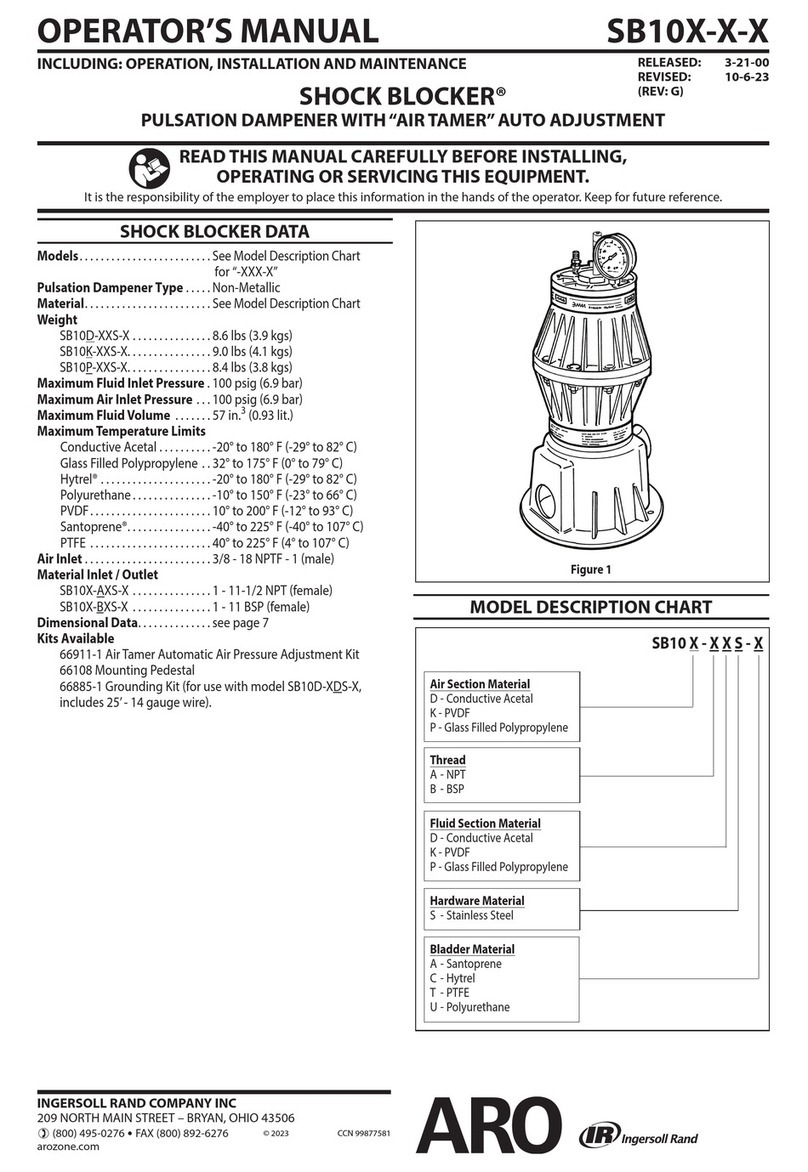
Ingersoll-Rand
Ingersoll-Rand ARO SHOCK BLOCKER SB10 Series Operator's manual
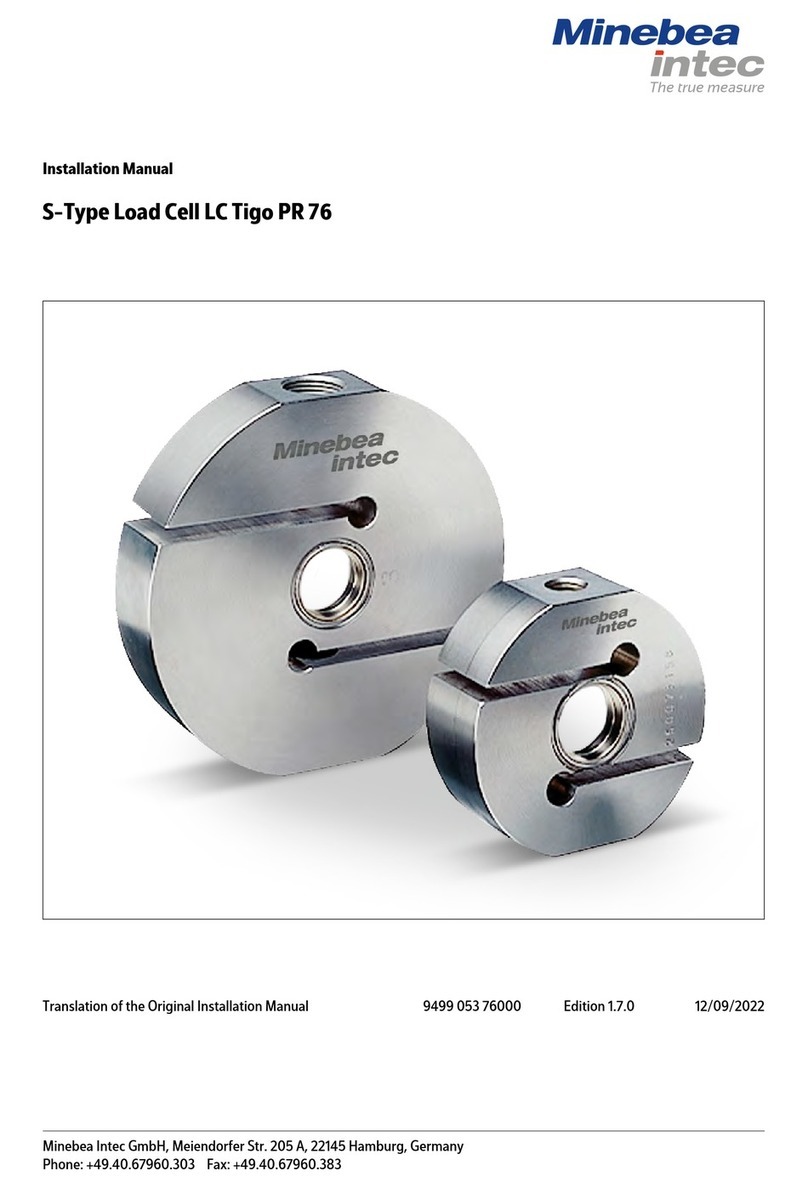
Minebea Intec
Minebea Intec S-Type Load Cell LC Tigo PR 76 installation manual
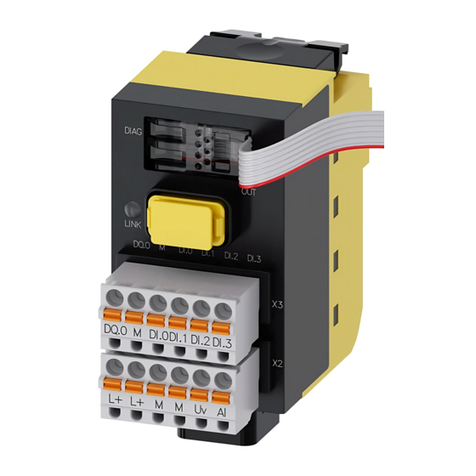
Siemens
Siemens 3SU1400-1LL10-.BA1 Original operating instructions
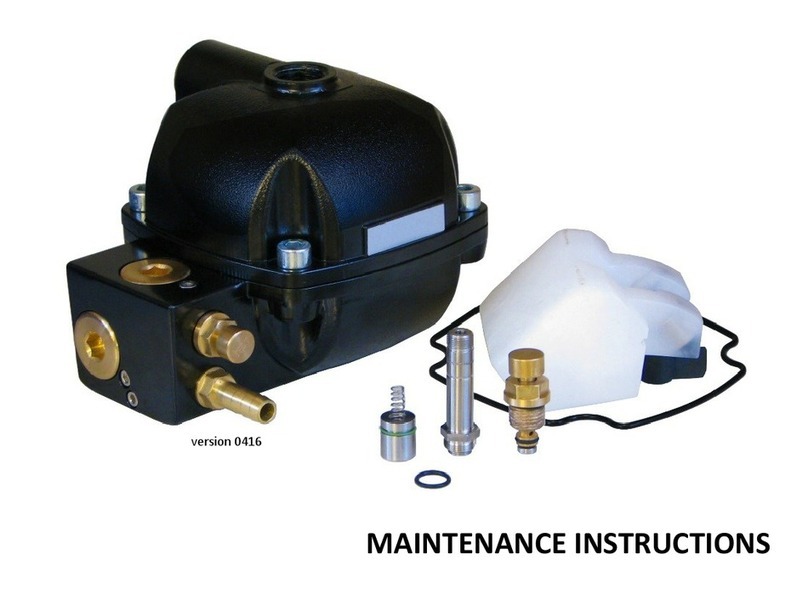
Jorc
Jorc NUFORS-CR Maintenance instructions
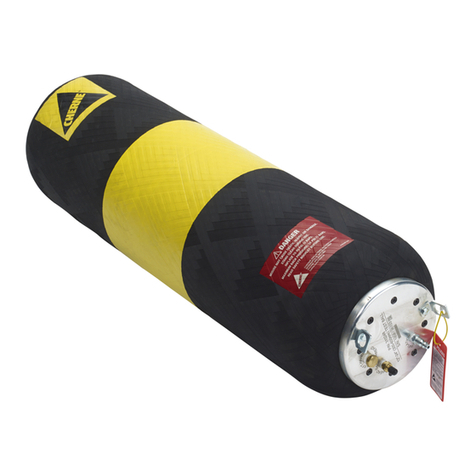
CHERNE
CHERNE Test-Ball Safety & instruction manual
